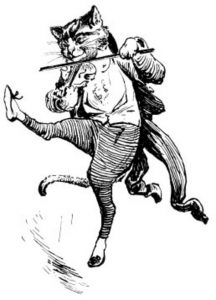
Ever wonder how the nursery rhyme Hey Diddle Diddle started? Wonder what the nursery rhyme means? Or who the characters could be? Nursery rhymes always have a beginning or various stories behind it all. There are many different meanings/origins behind them!
People come into contact with this children’s rhyme just like any other nursery rhyme. They read them in children rhyme books, or maybe school plays. Speaking of plays, there were a few plays back in the 1500s where it could have some history to the rhyme. In a play in 1569, written by Thomas Preston, he writes:
“They be at hand Sir with stick and fiddle;
They can play a new dance called hey-diddle-diddle.”
And in another play in 1597 written by Alexander Montgomerie, he writes:
“But since ye think’t an easy thing,
To mount above the moon,
Of your own fiddle take a spring,
And dance when ye have done.”
From 1765, it is where we’ve seen the Hey Diddle Diddle rhyme come together. The astrological meanings to this rhyme are to help farmers plant crops closer to the time of year where certain constellations are closer to the moon. The cat in this is Leo, the fiddle would be Lyra, Taurus would be the cow, the dish would be Crater and Ursa Major is the spoon.
The Egyptian meaning behind it would be Hathor, the goddess of love, joy, music, beauty, and motherhood. Her headdress she wore had a cow horn on it. It could appear that she may be the cow in the rhyme. The cat would be Bastet, a feline goddess. The sistrum was an instrument used in Egyptian times which was used to perform religious ceremonies when worshiping the goddess, Hathor.
But using England’s meaning to the rhyme, it would make a bit more sense than these other theories. Queen Elizabeth I was known for giving her favorite people nicknames. For how she treated her court, whom she saw was below her, they would be her mice and she is the cat. Lady Catherine Grey was Elizabeth I’s cousin, then she eloped with Edward Seymour and Elizabeth wasn’t very happy with it. Those two represented the dish running away with the spoon. This theory to the history and the characters would make more sense, compared to the others, since most of Mother Goose’s nursery rhymes are English. For example, Ring Around the Rosey is about the plague hitting England and it describes the death of many lives and the appearances of people would have as they went through the plague. One can not say for sure the origin and the significance of Hey Diddle Diddle, but there are many theories to it all.
Today, it’s a fun song beloved by children and used by parents and teachers. So join the fun, sing along and try out a Hey Diddle Diddle coloring page!